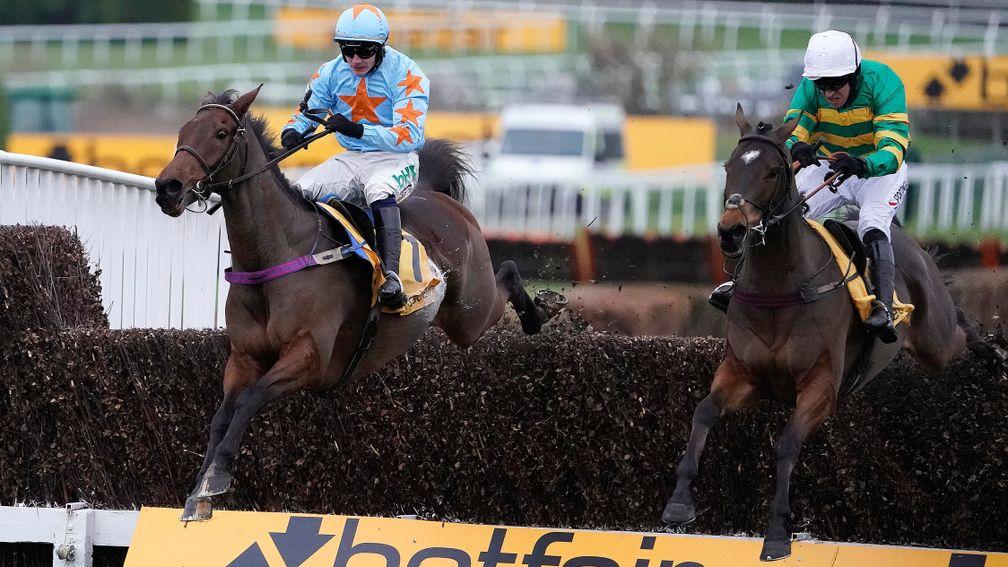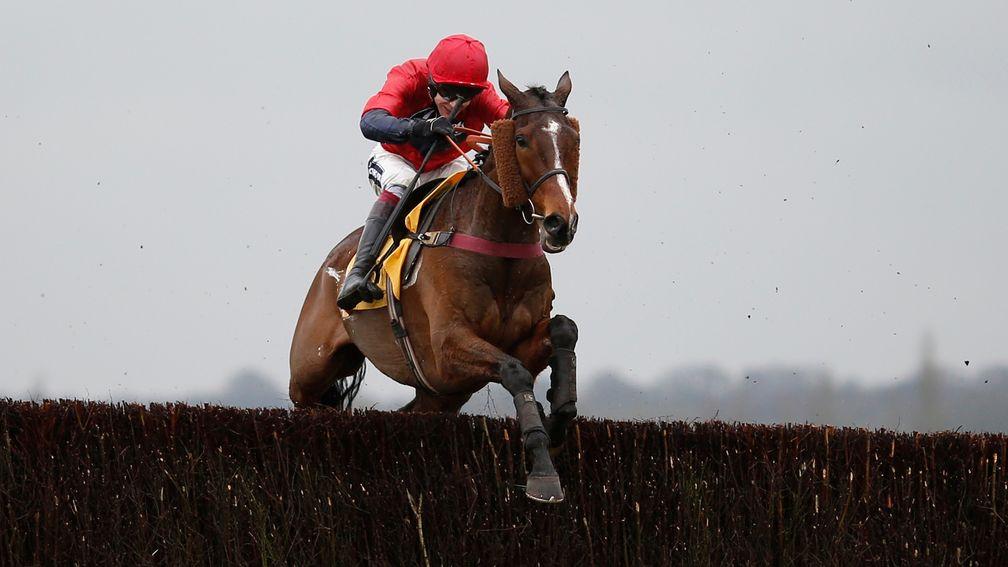Lessons must be learned from Sandown debacle
Confusion reigns after jockeys ignore yellow flag

While the positioning of the crosses on the ballot papers today is obviously of far greater importance than a Twitter poll on Sky Sports Racing last weekend, the outcome of that poll, like the General Election, showed how human minds can form a vast range of opinions on a single subject.
Sky Sports Racing asked whether the seven jockeys who continued to ride to the finish in the hugely controversial London National at Sandown on Saturday deserved their ten-day bans for having ignored the instruction to pull up.
And 58 per cent of respondents decided the riders’ punishment was unwarranted, which struck me as an astonishingly high figure, although there was plenty of comment on social media and elsewhere that supported the general view that the seven jockeys were hard done by.
Racing can find itself in some complex situations that are not a simple case of right or wrong, but this is not one of them. The jockeys were at fault and their bans will hopefully enable them to reflect on the dangers of riding through a yellow flag and also act as a clear message to others that it is not an option that can be considered in any circumstances.
Let’s recap what happened briefly. Houblon Des Obeaux, that wonderful old chaser, had suffered a fatal heart attack just after jumping the pond fence with more than a circuit to go in the long-distance contest.
While he was being tended to it was decided the race had to be stopped as he and those at the scene of the tragic situation were in a vulnerable position on the inside of the final bend before the home straight.

So, as is the standard procedure, an official stood in front of the pond fence, brandishing the yellow flag to indicate to jockeys that the race had been stopped. Additionally, loud whistles were blown to ensure the jockeys were aware of the need to come to a halt.
But despite everyone immediately guiding their horses to the right of the fence as instructed, only Aidan Coleman obeyed the demand to stop riding. The seven others whose mounts were still in contention instead steered a course between the screens and the outside rail and then carried on to the line.
There followed an unacceptable display of poor communication on the part of the course (more of which shortly) before, some 40 minutes later, it was announced the race had been declared void.
In the Twitter uproar that ensued everyone from the flag man to the stewards to Denis Compton was blamed for the problem, a bewildering scenario given how clearly the circumstances pointed to the actual culprits.
Be in no doubt that jockeys know the meaning of the yellow flag in exactly the same way motorists know the meaning of the red light, not least because there is a notice in every weighing room explaining what it stands for.
They cannot say they didn’t see it because they acted so quickly to avoid the fence and they cannot say they confused it with the black-and-white flag that simply means avoid this obstacle and carry on racing because bright yellow could not look more different to black-and-white checks.
More importantly, they see it before the start of every jumps race. When it is raised it means don’t race and when it drops, you race.
Coleman saw it, stood up in his stirrups, and appeared to try to warn the others to do likewise. They didn’t. Instead, with a decent prize on offer, they decided to keep going, which could have had disastrous consequences.
During a race jockeys have to make a number of split-second choices. Do they go for a gap that might be about to close? Do they ask their horse for a huge leap or try to squeeze in an extra stride? You can see from watching the superb jockeycam footage that it is a stressful business.
But when you see a yellow flag there is no decision to make. You just pull up. Quite why so many people are trying to pin the blame for what happened on Saturday on anyone else is a mystery.
And while it is unfortunate for the seven jockeys involved that their bans will sideline them during the busy Christmas period, it should not be overlooked that it will mean opportunities open up for other jockeys, who have ridden within the rules, to boost their earnings.
Nobody is being banned for the appalling treatment of punters and racegoers in the wake of Saturday’s contest but that does not mean it is equally vital that lessons are learned by Sandown and indeed every racecourse.
To simply announce a stewards’ inquiry without flagging up the strong possibility that the race could be voided is nothing short of a disgrace. This was the final event on the card, meaning most punters will have begun their journey home as soon as they saw the horse they had bet on was not involved in the finish.
After all, the assumption when an inquiry is called is that it will focus on interference, so why stick around if your runner failed to complete or was out of the frame?
How it was not obvious to the announcer or anyone with the capability to have a word with him that there was a need to alert the crowd at Sandown, and indeed punters in betting shops, that there was a decent chance all wagers were going to be refunded is beyond comprehension.
The consequence of this lamentable oversight is that numerous punters were left scrabbling around on the ground at the course or on betting-shop floors trying to find discarded slips or, more likely, went elsewhere and either found out later they were not in a position to retrieve the paper proof that they were due their stakes back or are still unaware they are owed money.
So now a significant sum is sitting unclaimed in the layers’ coffers, an extremely unsatisfactory state of affairs that was so avoidable if only someone at the track had realised there was an obvious need to offer something more than the standard “stewards’ inquiry” announcement.
Saturday’s Sandown card featured a truly fabulous race in the Betfair Tingle Creek, and it was a shame that subsequent events took the gloss off that thrilling finish.
Most of all, of course, we are left to mourn the loss of Houblon, one of those game, consistent beasts who keep giving their all year after year, thus playing such a key part in making people adore jump racing.
Professional fouls should be punished more severely
Heung-Min Son scored one of the goals of the season for Tottenham against Burnley on Saturday, yet the conclusion of most who watched it was not that it was a sensational box-to-box solo epic but that the opposition players were to blame.
Their crime? Not hacking down the South Korean before he was able to slide the ball home after his amazing dribble.
In the cold light of day it is strange that the primary reaction to such a fantastic goal is to castigate defenders for not resorting to unlawful methods to prevent it happening, but I have to admit there are times when I am at Selhurst imploring players to foul opponents in order to nip potentially dangerous breaks in the bud.
What this clearly shows is that the so-called professional foul is inadequately punished with a yellow card. It is too easy to hack someone to the ground, flick out a hand or, in the case of Arsenal's Matteo Guendouzi when Wilfried Zaha was about to charge clear this season, fling yourself at a rival and drag him down by the neck, knowing the worst that can happen is a booking.
As things stand such an action will only provoke a red card if the fouled player is deemed to be in a clear goalscoring position. But that needs to change so that a new category of offence – call it the professional or tactical foul – is defined that leads to the dismissal of the person who commits it, even if the incident takes place 80 metres from the perpetrator’s own goal.
As things stand, Sean Dyche and Burnley fans are probably entitled to feel annoyed that Son’s run was not halted earlier, but it would have been a crying shame for Saturday’s wonder goal to have been prevented so crudely and action is needed to avoid the game’s history being robbed of such magic moments.
Give trousers short shrift
On a list of things that would make the world a better place, this one is much nearer to the bottom than the top, but golfers and cricketers should be able to wear shorts when competing.
Both are summer sports that generally take place in warm weather yet players are required to wear long trousers for reasons that are not grounded in logic or what is best for the participants.
The recent Alfred Dunhill Championship in South Africa took place in ferocious heat, causing organisers to lift the long strides stipulation and allow shorts to be worn. It looked a bit odd at first but quickly seemed the perfectly natural thing to do.
Golf and cricket are far more deeply devoted to pointless tradition than they should be and it will be interesting to see which, if either, is the first to ditch the need for its participants to wear trousers.
Today's top sports betting stories
Follow us on Twitter @racingpostsport
Like us on Facebook RacingPostSport
Published on inBruce Millington
Last updated
- Vaccine offers hope that sport will open its doors and is something to celebrate
- DeChambeau's approach doesn't appeal to me, but his price certainly does
- We'd do well to pay greater respect to life's uncertainties
- Bruce Millington: celebrate the range of racing options rather than cutting back
- Villa are clearly on the up but theirs odds oversell the chance of a title miracle
- Vaccine offers hope that sport will open its doors and is something to celebrate
- DeChambeau's approach doesn't appeal to me, but his price certainly does
- We'd do well to pay greater respect to life's uncertainties
- Bruce Millington: celebrate the range of racing options rather than cutting back
- Villa are clearly on the up but theirs odds oversell the chance of a title miracle